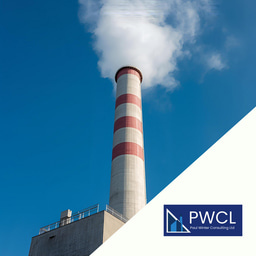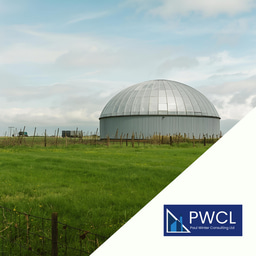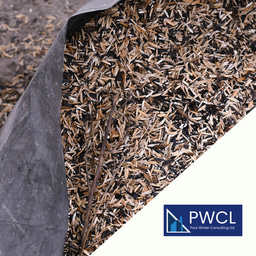Waste to Energy technologies and the future of EfW

The waste management industry has undergone a number of changes over recent years, particularly in response to the renewable energy movement and the journey towards Net Zero goals.
As such, the waste management industry sits at the forefront of innovation and innovative technology, providing efficient, cost-effective solutions to waste management, renewable energy solutions, and waste recycling; innovation within technology impacts on recycling practices, and their potential to revolutionise waste management strategies.
Waste to Energy technologies
Plasma Arc Gasification: plasma arc gasification is a brand new technology that utilises plasma at high temperatures to break down particularly hazardous waste into syngas; where this technology can be leveraged to manage some of the most challenging waste and reduce environmental risks whilst also, of course, generating renewable energy that can be used to heat & power homes in the local area.
Advanced Gasification: advanced gasification technologies are a hot topic in the Waste to Energy industry as it involves converting various waste types into a syngas which can be utilised as a fuel for electricity. What makes advanged gasification so promising is its higher efficiency, reduced emissions, and flexibility.
Hydrothermal Carbonisation (HTC): hydrothermal carbonisation is the process of taking organic matter and converting that into ‘biochar’ within a water-based environment, using high temperatures and pressures. This method of processing is typically used on wet biomass; sewage sludge and organic residues to create a product that is carbon-rich and great for both soil health and carbon sequestration, a bit like anaerobic digestion and the nutrient-rich byproduct produced that, when treated, can be used on crops and fields.
Thermal Depolymerization: Thermal depolymerisation can be used to break down aliphatic polyesters, like Polylactic Acid into cyclic dimer or lactide and can also be used to convert complex organic materials into light crude oil, gas and carbon solids. Thermal depolymerisation has actually been available for decades, but may be more important today than ever before as it’s considered to have a number of environmental benefits, including reducing plastic waste, greenhouse gas emissions, and air pollution as well as providing a potential alternative for sewage treatment.
Waste incineration
And, of course, there can’t be a discussion around EfW technologies without mention of incineration which, as we all know, has a become pretty controversial topic over the last couple of months especially; this year alone seeing a temporary ban on incineration permits, inclusion of EfWs and waste incinerators in the Emissions Trading Scheme, and the Conservatives intention to ban incinerators as part of their 2024 General Election manifesto.
But, to make waste incineration more environmentally friendly, a number of innovations have been developed in recent years including the development of advanced combustion systems, which can increase the efficiency of the incineration process whilst reducing emissions.
Carbon Capture technologies
Alongside this, a variety of Carbon Capture technologies have also emerged which, when implemented, can significantly reduce the amount of CO2 released into the atmosphere from waste incineration and other EfW solutions. These include:
Post-Combustion Capture: this method captures CO2 from the flue gases after the fuel has been burned. It often uses chemical solvents to absorb the CO2.
Pre-Combustion Capture: in this approach, the fuel is converted into a mixture of hydrogen and CO2 before combustion, after which the CO2 is then separated and captured.
Oxy-Fuel Combustion: this technique burns the fuel in pure oxygen instead of air, resulting in a flue gas that is mostly CO2 and water vapor, making it easier to capture the CO2.
Direct Air Capture (DAC): this innovative method involves using machines to directly remove CO2 from the ambient air. The captured CO2 can then be stored or used in various applications.
Bioenergy with Carbon Capture and Storage (BECCS): this combines biomass energy production with Carbon Capture and Storage; where plants absorb CO2 as they grow, and when they are used for energy, the CO2 is captured and stored, resulting in a net reduction of CO2 in the atmosphere.
The future of Waste to Energy
Despite controversies and a recent, significant focus on clean energy from especially wind and solar farms, the Waste to Energy industry certainly has a bright future ahead; supported by new and emerging technologies to reduce emissions, increase efficiency and improve output.
The issues facing Energy from Waste plants and waste incinerators currently come from -
- Policy
- Public opinion driven by [recent] negative press
- Issues with the National Grid
Where ongoing issues with the National Grid are hindering so many renewable energy and low-carbon energy solutions of differing types; leaving new projects awaiting Grid connection dates 15 years in the future.
This, however, could very well be alleviated with the introduction of regulation TMO4+ in January 2025, which aims to prioritise projects that are ready to build and have acquired the appropriate rights and planning permissions, over potential projects that offer no proof of land rights or viability; giving the industry - developers, investors and projects that are otherwise frozen, waiting patiently in an ever-increasing queue - hope of connection in the near future.
If successful, this could lead to not only an upturn in renewable energy flowing through the Grid and powering homes & businesses across the UK as we all desire but also an increase in public opinion and confidence in a wider variety of renewable energy solutions, leading - hopefully - to widespread adoption and higher demand.
And, in an ideal world, this would also then lead to increased investor confidence and activity.
But…
One new regulation is unlikely to change the entire landscape of the Waste to Energy industry and, realistically, there are multiple elements that need to change for all of the above to happen; TMO4+ is just one of them - as significant as it may be.
We also need -
- Urgent upgrades to the National Grid
- Increased Government backing
- Greater and more detailed information widely available to the general public on the benefits and processes involved in Waste to Energy and waste incineration, and just how ‘clean’ it can be
Which we hope will all follow in time.
Until then, we’re eagerly awaiting the new regulation change whilst working with developers and investors to implement new technologies in EfW; improving efficiencies, increasing output and reducing emissions to make plants as eco-friendly as possible.





Please sign in or register for FREE
If you are a registered user on Energy from Waste Network, please sign in